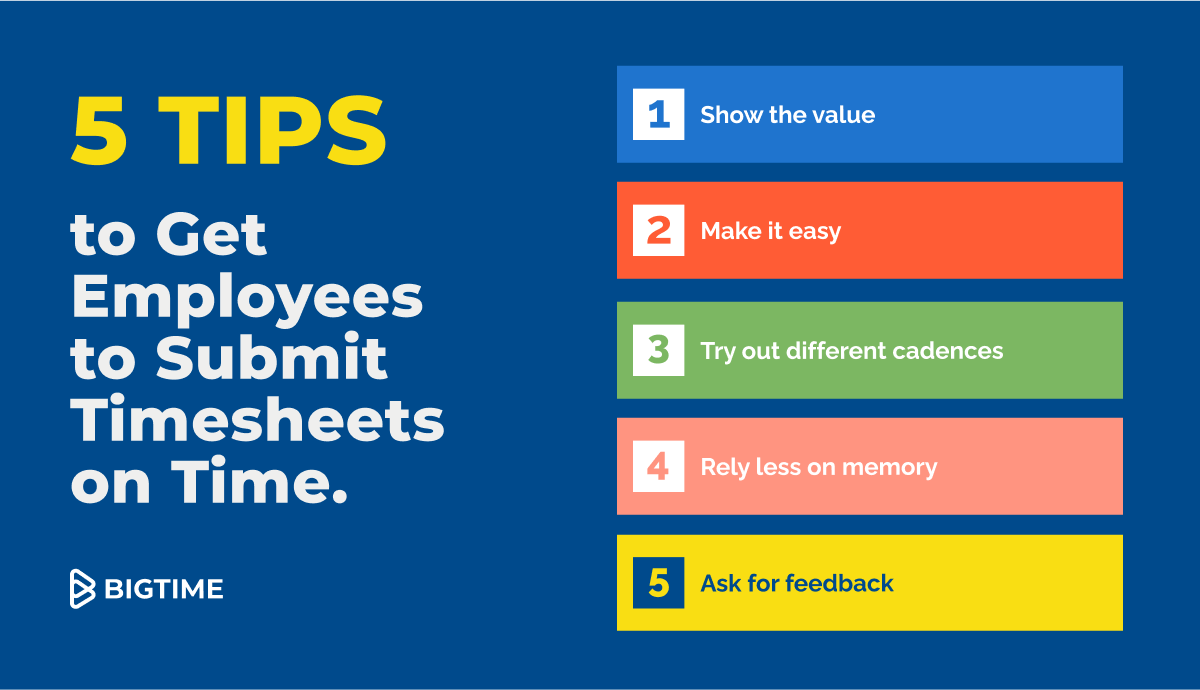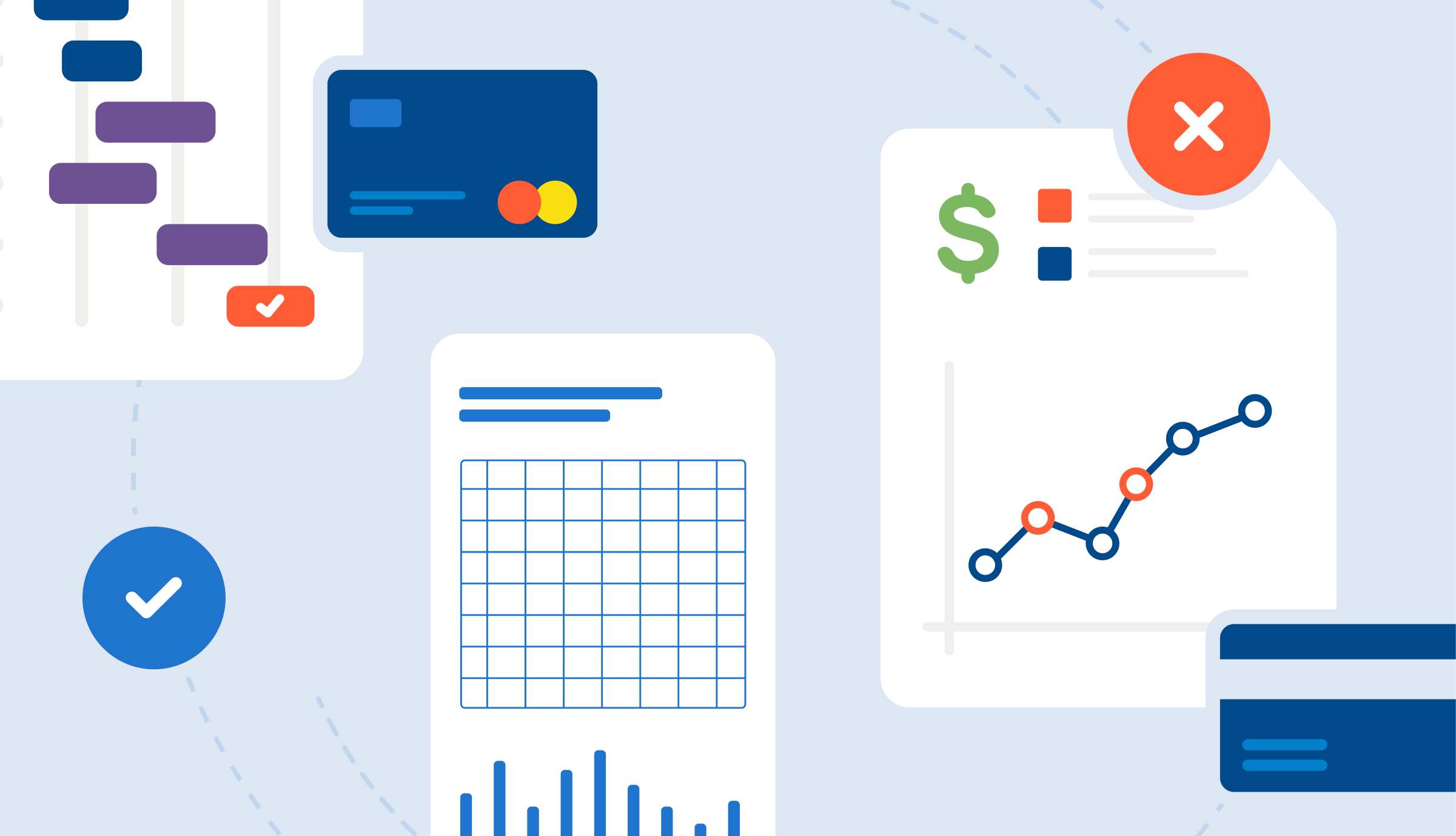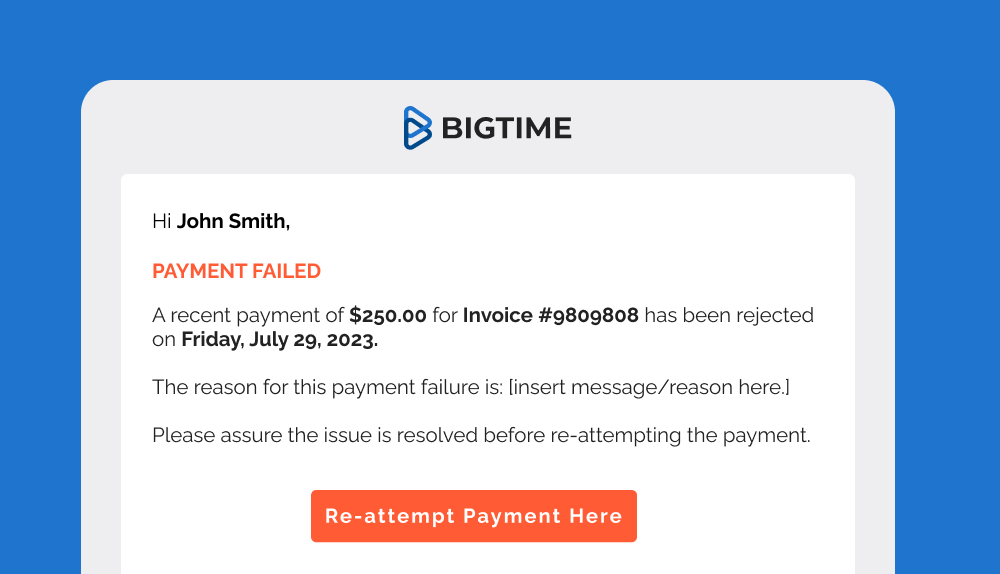.png)
Last updated March 23rd, 2023
It’s often the task that separates you from the weekend or going home for the day, so it’s no wonder that it gets a bad rep. Employee time and expense tracking are historically tedious and often pushed aside when employees are prioritizing what needs to be done. If you’re reading this, I’m sure you’ve reached a level of frustration in regards to how to get employees to submit timesheets on time.
Not to worry, this is a bad habit that can be easily fixed with the right coaxing. We gathered the tips that actually work for getting your whole team on board to track their time and expenses regularly and with accuracy. So you can get the vital information needed to keep your firm’s financials and projects on track.
Expense and Time Tracking Tip #1: Show the Value
The most universal motivator when it comes to expense and timesheet compliance is the why. Expecting a task to get done without explaining the value behind it does little to motivate, like asking a teenager to make a bed. Take the time during onboarding, or during a town hall if your whole firm needs a refresher, to go through how the process of tracking time and expenses connects to the bigger picture of the way your firm functions.
Having your employees invested in the process will put submitting timesheets and expenses higher on their priority list. This will also help bridge the gap between finance and project teams, resulting in more productive project management.
Need some more help? Check out this helpful article on tackling change management in 3 phases.
Expense and Time Tracking Tip #2: Make it Easy
The simpler the better. Do a thorough audit of your time and expense tracking requirements to see where you can cut out inefficiencies. Having consultant time tracking software to create a uniform process for all employees instead of having them independently tracking in Excel as a manual process is a great place to start.
Using software to submit timesheets and expenses can reduce the margin of human error in their tracking and therefore cut down on the number of corrections needed. For example, only allowing staffers to track the projects and tasks assigned to them instead of filtering through the choices, or marking certain fields required so what’s expected of them is clear.
Being able to access timesheets or expense reports from any computer or mobile app also helps, especially while working remotely. Tracking billable hours on the go is easier when it’s top of mind while simultaneously improving accuracy.
.png)
Expense and Time Tracking Tip #3: Try Out Different Cadences
Many firms see success when timesheets are due daily as it’s easier to remember when the day is fresh in your mind and it’s less of a headache trying to recall what was worked on. However, following that routine may not work for your firm’s project structures.
Test out daily, weekly, biweekly, and see what works best. Once you have found the system you like, make it a formal policy for your firm. It may take a while for employees to form the habit and as always there will be some resistance to change. But, at least you’ll be confident you made the best choice for accuracy and productivity.
Expense and Time Tracking Tip #4: Rely Less on Memory
As we suggested in the other tips, often what causes the frustration in time and expense tracking is having to recall on your memory. Especially when juggling many different projects, it can become a time-consuming task in itself.
One QuickBooks survey revealed that corrections had to be made on 80% of timesheets that were submitted by employees at U.S. businesses. Employees cited not remembering hours worked or when they started or stopped. The best way to start relying less on memory is to make changes to the way you work.
Using an integrated timer for tasks within your time and billing software helps many, or a softer approach is using your calendar to block out time for tasks. Instead of making a to-do list of five things for the day, mark them as time blocks on your calendar. Then, when you look back you already have an estimate of how much time each task took and can record notes on if it took more or less time after completion.
Expense and Time Tracking Tip #5: Ask for Feedback
Don’t be afraid to ask staffers why their time and expense tracking is lacking or why they can’t comply when timecards are due. Chances are their pain points will overlap and there will be a more obvious solution. If you are in the process of adapting a new time tracking software, get your employee’s feedback on if project codes or other custom fields are working for the way they track their projects. Now is a great time to make any adjustments before you’re too deep into a system.
More than anything, don’t forget patience. It’s never going to be the most thrilling part of anyone’s job, but with the right software and processes in place, time and expense tracking can run seamlessly in the background to where you forget it was ever a nuisance at all.

Summary
Time and expense tracking can be a tedious task that employees often push to the side when prioritizing their work. However, with the right approach, this bad habit can be easily fixed. When it comes to how to get employees to submit timesheets on time, here are 5 tips that can help project managers get their team to track time and expenses regularly and accurately:
- Show the value
- Make it easy
- Try out different cadences
- Rely less on memory
- Ask for feedback
If you’re ready to see how BigTime’s time and expense software could work for your firm, schedule your free personalized demo here.

Frequently Asked Questions About How to Get Employees to Submit Timesheets on Time
How do I get employees to submit timesheets on time?
Here are 5 tips to help project managers get their team to track time and expenses on time and accurately:
- Show the value
- Make it easy
- Try out different cadences
- Rely less on memory
- Ask for feedback
Why are timesheets important in consulting?
Timesheets are crucial in consulting for several reasons, allowing project managers to:
- Accurately track project progress
- Ensure clients are billed correctly
- Plan effective allocation of resources
- Understand project costs
- Have real-time visibility into consultant utilization
How do you motivate employees to complete timesheets?
To motivate employees to complete timesheets, it’s important to explain their importance, provide clear instructions and expectations, make it easy through technology, and ask for feedback to uncover common pain points.




